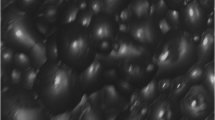Abstract
Watershed segmentation is suitable for producing closed region contour and providing an accurate localization of object boundary. However, it is usually prone to over-segmentation due to the noise and irregular details within the image. For the purpose of reducing over-segmentation while preserving the location of object contours, the watershed segmentation based on morphological gradient relief modification using variant structuring element (SE) is proposed. Firstly, morphological gradient relief is decomposed into multi-level according to the gradient values. Secondly, morphological closing action using variant SE is employed to each level image, where the low gradient level sets use the large SE, while the high gradient level sets use the small one. Finally, the modified gradient image is recomposed by the superposition of the closed level sets, and watershed transform to the modified gradient image is done to implement the final segmentation. Experimental results show that this method can effectively reduce the over-segmentation and preserve the location of the object contours.
Similar content being viewed by others
References
S. Beucher and F. Meyer, Optical Engineering 34, 433 (1992).
Chen Guang Zhao and Tian Ge Zhuang, Pattern Recognition Letters 26, 1256 (2005).
Shengzhou Xu, Hong Liu and Enmin Song, Journal of Digital Imaging 24, 754 (2011).
Andrè Bleau and L. Joshua Leon, Computer Vision and Image Understanding 77, 317 (2000).
P. Maragos and C. Vachier, Overview of Adaptive Morphology: Trends and Perspectives, 16th IEEE International Conference on Image Processing, 2241 (2009).
Fernand Meyer, International Journal of Pattern Recognition and Artificial Intelligence 15, 1089 (2001).
J. M. Gauch, IEEE Transaction on Image Processing 8, 69 (1999).
XU Jian-dong, SUN Ying-chun, LI Shuai, HUANG Jinxia, JIANG Ye and JIANG Yong-cheng, Journal of Optoelectronics ·Laser 23, 956 (2012). (in Chinese)
Leyza Baldo Dorini, Rodrigo Minetto and Neucimar Jeronimo Leite, IEEE Journal of Biomedical and Health Informatics 17, 250 (2013).
Lulu Xu and Huaxiang Lu, IEEE Transactions on Nanotechnology 12, 51 (2013).
Xiaodong Yang, Houqiang Li and Xiaobo Zhou, IEEE Transactions on Circuits Systems I: Regular Papers 53, 2405 (2006).
Fernand Meyer, Journal of Mathematical Imaging and Vision 20, 59 (2004).
Ross T. Whitaker and Xinwei Xue. X, Variable-Conductance, Level-Set Curvature for Image Denoising, IEEE International Conference on Image Processing 3, 142 (2001).
Issam Dagher and Kamal El Tom, Image and Vision Computing 26, 905 (2008).
A. Sofou and P. Maragos, IEEE Transactions on Image Processing 17, 364 (2008).
Corinne Vachier and Fernand Meyer, Journal of Mathematical Imaging and Vision 22, 251 (2005).
Corinne Vachier and Fernand Meyer, News from Viscousland, 8th International Symposium on Mathematical Morphology, 189 (2007).
Author information
Authors and Affiliations
Corresponding author
Additional information
This work has been supported by the National Natural Science Foundation of China (No.61261029), the Jinchuan Company Research Foundation (No.JCYY2013009), the Gansu Province Science and Technology Support Program (No.1204GKCA051), and the Gansu Province Higher Education Fundamental Research Funds (No.212090).
Rights and permissions
About this article
Cite this article
Wang, Xp., Li, J. & Liu, Y. Watershed segmentation based on gradient relief modification using variant structuring element. Optoelectron. Lett. 10, 152–156 (2014). https://doi.org/10.1007/s11801-014-3209-5
Received:
Published:
Issue Date:
DOI: https://doi.org/10.1007/s11801-014-3209-5




